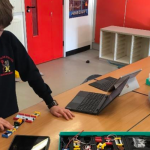The implementation of STEM Education in Schools has become a significant trend to combat today’s global challenges through the combination of science, technology, engineering, and mathematics. Countries around the world are recognizing the importance of incorporating STEM Education in Schools to equip tomorrow’s workforce with 21st century skills that are in high demand and will be crucial for the future. STEM Education can help schools run more efficiently while improving their overall student outcomes. Whether you lead a school or work with students there, it’s important to know how implementing STEM Education can benefit your program. In this blog post, we will provide you insights on what implementing STEM Education means and potential benefits of doing so.
What is STEM Education?
STEM Education is a type of education that emphasizes the skills needed to create and make the things of the 21st century. These skills include problem-solving, critical thinking, creativity, and collaboration.STEM Education has been known as the “new literacy” because it bridges the gap between traditional literacy (reading and writing) and 21st century skills.The growing demand for STEM skills has led to countries offering incentives to those who teach and provide resources for those who want to learn them.
Why is STEM Education Important?
STEM Education is where the future of work is headed. The world is quickly moving towards a more automated and digital future. Machines are becoming more intelligent, even surpassing human cognition. In order to compete in this automated world, we need to provide our future workforce with the skills that are relevant. STEM Education is crucial in this changing future.The automation of industries such as healthcare and transportation has increased the demand for skilled workers. At the same time, the skills needed to compete in these industries are changing. New knowledge, skills, and abilities are required to navigate in the digital world. STEM Education can help prepare students for this transition by teaching them critical thinking and problem-solving skills that are vital in the workplace.
How to Implement STEM Education in Schools?
STEM Education is not just about assigning students to a lab and watching them learn while they work. It’s also about preparing them with the resources they need to succeed. This includes identifying student needs and providing the right skills and resources to support those needs.STEM education involves a partnership between schools and local businesses. This partnership can help schools incorporate STEM education with less disruption to daily operations. Topics such as computer programming or robotics can be introduced in a way that doesn’t disrupt the regular school day and doesn’t require a massive investment.
Example of a School that has incorporated STEM education
The majority of the assets of a school district are tied to a set of buildings. For example, a majority of the district’s funds are tied to the school’s building. To maximize the value of these assets, the district may want to renovate or replace the existing school, even though many factors indicate that the district would benefit from constructing a new school.When the district decides to renovate the existing school, it might initially examine the costs involved in renovating the existing building. However, that decision process is incomplete because it ignores the potential benefits of a new school.When the district decides on a renovation, it might be too late to incorporate STEM education. However, the district might be able to incorporate STEM education in its new school construction.
Summary
STEM Education is important because it offers students a variety of skills that will help them compete in the modern workforce. These skills include problem-solving, critical thinking, creativity, and collaboration. To implement STEM Education, schools can adapt to the changing needs of their students and provide the necessary resources to support them. The majority of assets of a school district are tied to a set of buildings, such as a school’s building. When the district decides to renovate the existing school, it might initially examine the costs involved in renovating the existing building. However, that decision process is incomplete because it ignores the potential benefits of a new school. When the district decides on a renovation, it might be too late to incorporate STEM education into a new school. However, the district might be able to incorporate STEM education into its new school construction.



